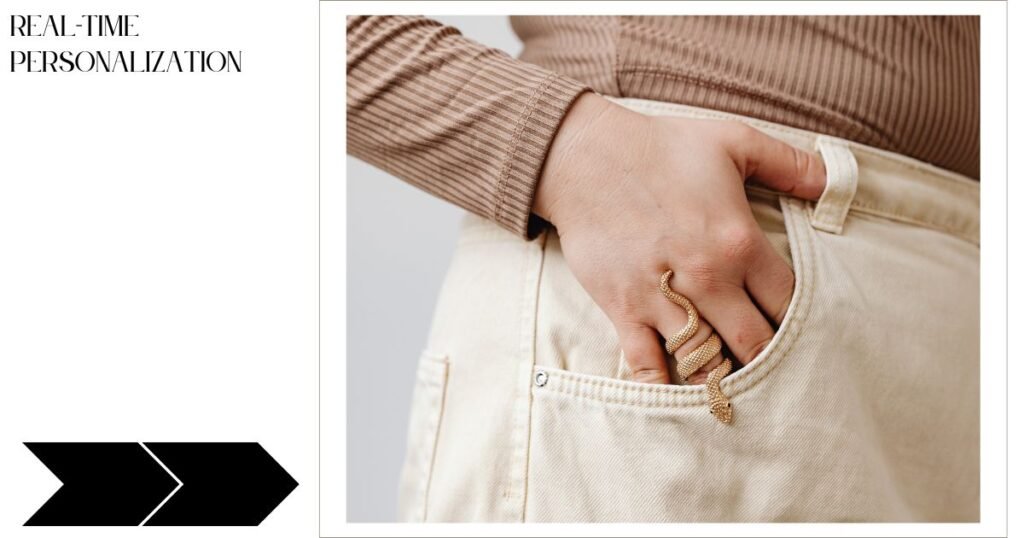In today’s fast-changing retail world, personalization has shifted from being a luxury to a necessity. Shoppers now expect experiences tailored to their unique preferences, and the fashion industry is no exception. Enter AI outfitting—a groundbreaking innovation that uses artificial intelligence to elevate personalization in retail fashion. But what exactly is AI outfitting, and how is it reshaping the way we shop for clothes? Let’s explore.
Understanding AI in Fashion
The Evolution of Fashion Technology
Fashion has always been a powerful expression of culture, identity, and individuality. Over the years, technology has revolutionized how we engage with fashion, transforming everything from shopping habits to the in-store experience. Innovations like online shopping and smart mirrors in fitting rooms have reshaped the industry, but the emergence of AI is taking fashion technology to an entirely new level.
What Is AI Outfitting?
AI outfitting harnesses the power of artificial intelligence to deliver personalized fashion experiences. This technology can recommend outfits based on individual preferences, predict upcoming fashion trends, and even analyze a consumer’s style, fit, and mood. By processing vast amounts of data, AI creates shopping experiences that feel uniquely tailored to each person.
Why Personalization Matters in Retail Fashion
Personalization in retail is no longer just a nice-to-have—it’s a necessity for meeting modern consumers’ expectations. With endless options available, shoppers crave clothing that reflects their individuality rather than one-size-fits-all solutions. AI outfitting enables this level of customization on an unprecedented scale, providing unique experiences that resonate with today’s desire for self-expression.
How AI Outfitting Works
Data Collection and Analysis
AI outfitting begins with data—lots of it. Every time a consumer interacts with a fashion brand, data is generated. This includes browsing history, purchase patterns, social media activity, and even how long a consumer lingers on a particular product page.

The Role of Machine Learning in AI Outfitting
If a consumer frequently buys floral dresses in the spring, the AI can recommend similar styles or suggest complementary accessories. Over time, the AI improves its accuracy by learning and adapting to the consumer’s preferences.
The Impact of Big Data on Fashion Choices
Big data plays a crucial role in AI outfitting. By analyzing data from millions of users, AI can identify emerging trends and tailor recommendations accordingly. This means that consumers not only receive suggestions based on their personal style but also stay ahead of the curve with the latest fashion trends.
AI Algorithms in Fashion
AI algorithms are the brains behind AI outfitting. They process the data collected to deliver personalized recommendations, but their role doesn’t stop there.
Predictive Analytics for Fashion Trends
Predictive analytics uses historical data to forecast future fashion trends. By analyzing past purchasing behaviors, AI can predict which styles will be popular in the coming seasons, allowing retailers to stock the right inventory and consumers to stay fashionable.
Personalized Recommendations
The core of AI outfitting is its ability to deliver personalized recommendations. Whether it’s suggesting an outfit for a special occasion or recommending a complete wardrobe overhaul, AI ensures that every suggestion aligns with the consumer’s unique style and preferences.
Benefits of AI Outfitting for Consumers
Enhanced Shopping Experience
AI-powered outfitting greatly improves the shopping experience by offering a more personalized and convenient approach.
Customized Wardrobe Suggestions
Imagine opening your favorite fashion app and being greeted with a selection of outfits that are perfectly suited to your taste, body shape, and the current season. AI outfitting makes this a reality by curating personalized wardrobes for each consumer.
Virtual Try-Ons
Virtual try-ons are another exciting feature of AI outfitting. Using augmented reality (AR), consumers can see how clothes will look on them without ever stepping into a fitting room. This not only saves time but also reduces the uncertainty of online shopping.
Increased Customer Satisfaction
Personalization leads to increased customer satisfaction, as consumers feel understood and valued by the brands they shop with.
Fit and Style Recommendations
One of the most common challenges in online shopping is finding clothes that fit well. AI outfitting addresses this by recommending items that match the consumer’s body measurements and style preferences, reducing the likelihood of returns.
AI-Assisted Fashion Guidance
For those who struggle with fashion decisions, AI can serve as a virtual stylist, offering guidance on what to wear and how to accessorize. This helps consumers make confident choices and discover new styles they might not have considered otherwise.
Benefits of AI Outfitting for Retailers
Improved Inventory Management
AI outfitting doesn’t just benefit consumers—it also offers significant advantages for retailers.
Demand Forecasting
By analyzing consumer data, AI can forecast demand more accurately, allowing retailers to stock the right products at the right time. This reduces overstock and out-of-stock situations, leading to more efficient inventory management.
Reduced Return Rates
When consumers receive personalized recommendations that fit well and suit their style, they are less likely to return items. This reduces the costs associated with returns and improves overall profitability for retailers.
Higher Conversion Rates
Personalization is a powerful tool for boosting conversion rates, as it creates a more engaging shopping experience.
Targeted Marketing Campaigns
AI outfitting enables retailers to create highly targeted marketing campaigns based on individual consumer preferences. This increases the likelihood of conversion, as consumers are more likely to respond to offers that align with their interests.
Personalized Shopping Experiences
The more personalized the shopping experience, the more likely consumers are to make a purchase. AI outfitting ensures that every interaction a consumer has with a brand feels unique and tailored, leading to higher conversion rates.
Challenges in Implementing AI Outfitting
Data Privacy Concerns
While AI outfitting offers many benefits, it also raises significant challenges, particularly around data privacy.
Protecting Customer Information
Retailers must ensure that they have robust security measures in place to protect customer information and maintain trust.
Transparency and Trust Issues
Transparency is key to building trust with consumers. Retailers must be clear about how they collect and use data, and they should offer consumers the option to control their data preferences.
Technical Challenges
Implementing AI outfitting requires overcoming several technical hurdles.
Integration with Existing Systems
Many retailers have legacy systems that may not be compatible with AI technology. Integrating AI outfitting into these systems can be complex and requires significant investment.
Continuous Algorithm Improvement
AI algorithms need to be continuously updated and improved to remain effective. To stay ahead in technological advancements, ongoing investment in research and development is essential, along with a commitment to innovation.
Future of AI Outfitting in Retail Fashion
Advances in AI and Machine Learning
The future of AI outfitting is bright, with many exciting developments on the horizon.
Enhanced Predictive Capabilities
As AI and machine learning technologies continue to evolve, their predictive capabilities will become even more accurate. This will enable even more personalized and timely fashion recommendations.
Real-Time Personalization

In the future, AI outfitting could offer real-time personalization, allowing consumers to receive recommendations based on their current mood, location, or even the weather.
Virtual and Augmented Reality
Virtual and augmented reality will play a significant role in the future of AI outfitting.
Immersive Shopping Experiences
Imagine walking through a virtual store, trying on clothes, and receiving personalized recommendations—all from the comfort of your home. This is the future of retail fashion, thanks to advancements in AI and AR technologies.
The Rise of Virtual Fashion Assistants
Virtual fashion assistants, powered by AI, could become a common feature in online shopping platforms. These assistants would provide personalized fashion advice, helping consumers navigate the vast array of options available to them.
Conclusion
AI-driven outfitting is transforming the retail fashion industry by providing unmatched levels of personalization. For consumers, it means a more enjoyable and satisfying shopping experience. For retailers, it translates into higher conversion rates, better inventory management, and ultimately, increased profitability. As AI technology continues to advance, the future of fashion looks more personalized and exciting than ever.
FAQs
How does AI Outfitting differ from traditional personalization methods?
AI outfitting uses advanced algorithms and big data to deliver highly personalized fashion recommendations, whereas traditional methods rely more on general trends and limited consumer data.
Is AI Outfitting accessible to small retailers?
Yes, as AI technology becomes more affordable and user-friendly, even small retailers can implement AI outfitting to enhance their personalization efforts.
Can AI truly understand individual fashion preferences?
AI can analyze vast amounts of data to identify patterns in consumer behavior, allowing it to make highly accurate predictions about individual fashion preferences.
What ethical issues arise from the use of AI in the fashion industry?
The main ethical concerns include data privacy, transparency, and the potential for AI to reinforce harmful stereotypes or exclude certain groups from personalized experiences.
How will AI Outfitting evolve in the next decade?
AI outfitting is expected to become more sophisticated, offering real-time personalization, integrating with virtual and augmented reality, and providing even more accurate fashion recommendations.





